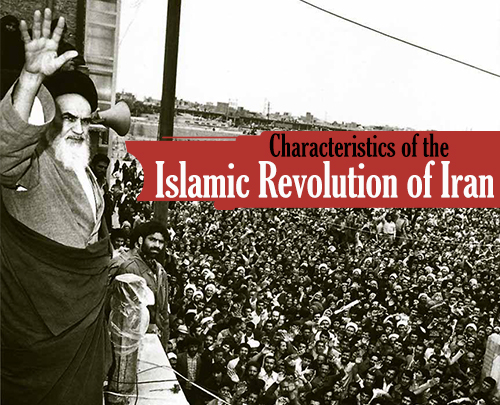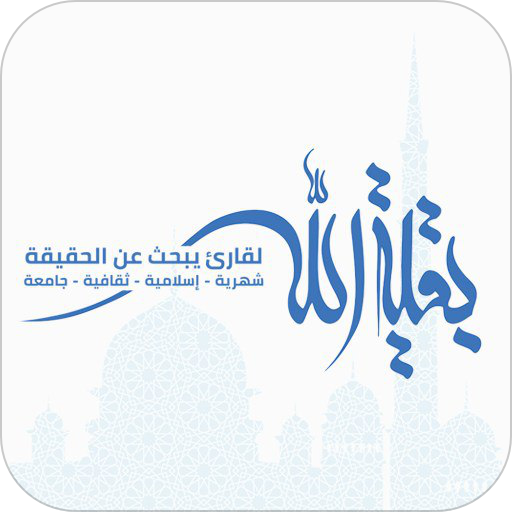Period of Studying and Teaching
Until the age of nineteen, His Holiness Imam Khomeini remained in Khomein where
he received his elementary education from the teachers in that town. The
subjects he studied included Arabic literature, logic, dogmatic theology and
Islamic jurisprudence. In 1921 (1299 AHS / 1339 AS) he went to study religious
science in Arak at a theology institute there, and a year later he moved to the
city of Qom to continue his studies. There, in addition to completing his
previous studies with the religious experts (fuqaha) and religious authorities (mujtahedin)
of the time, he also learned mathematics, astronomy and philosophy. It was here
that he attended lectures on ethics and Islamic mysticism and for a period of
six years he studied the most advanced levels of applied and theoretical
mysticism under the late Ayatollah Aqamirza Mohammad `Ali Shahabadi.
Imam's period of teaching began in 1929 (1307 AHS / 1347 AS), when he was 27
years old, with lectures in Islamic philosophy, and throughout the rest of his
stay in Qom, the subjects he taught there were Islamic philosophy, theoretical
mysticism, jurisprudence, the principles of jurisprudence and Islamic ethics.
Period of Struggle and Uprising
Based on existing documents, Imam’s struggle began in the early years of his
adolescence and continued throughout the period of study in various forms
against social corruption and ideological and moral deviations. In 1941 (1322
AHS), in what is considered to be his first public political statement, Imam
wrote and published a book entitled Kashfol-Asrar in which he revealed the
crimes of the 20-year monarchy of Rida Shah. The book is essentially a detailed,
systematic critique of an anti-religious tract, and in defending Islam and
spirituality, Imam refutes the deviatory sophisms employed by the author. It is
in this book that the idea of an Islamic government, and the need for an
uprising to establish this, is propounded.
Imam's overt struggle against Mohammad Rida’s regime began in 1960 (1341 AHS)
with his opposition to the Provincial and District Councils Bill which
essentially sought the eradication of Islam. With its approval by the government
of the time, the Islamic stipulations concerning voters and candidates were
dropped and the pledge of allegiance was changed from swearing ‘on the Holy
Qur’an’ to swearing ?on the Holy Book?. Imam rose up in opposition to the bill
and invited the other maraje’, the theological schools and the people to rise up
with him.
Following Imam’s warnings to the government in the form of telegrams to the
prime minister of the time, along with his revelatory speeches and trenchant
declarations and coupled with the support given by the maraje’ as well as the
widespread demonstrations of the people in Qom, Tehran and other cities, the
Shah’s regime was forced to retreat from its stance and rescind the bill. The
struggle continued, and the regime, in a precipitous move on March 22, 1963 (Farvardin
2, 1342 AHS) attacked the Feyziyeh theological center in Qom. Imam’s messages
and speeches on this tragic incident were distributed throughout Iran, and on
the afternoon of `Ashura 1383 AS (June 3, 1963 / Khordad 13, 1342 AHS), in a
hard-hitting speech, he revealed the secret relations, the agreements and the
friendship existing between the Shah and Israel. Subsequently, at 3 am in the
morning of June 5 (Khordad 15), Imam’s home was surrounded by commandos and as
dawn broke, the Leader of the Revolution was arrested and taken to Tehran.
The response of the people was immediate. As news of Imam’s arrest broke around
the country, the people took to the streets in the early hours of June 5 and
staged protest demonstrations. The largest of these took place in the city of
Qom, and as soldiers intervened, large numbers of people were martyred. With the
announcement of martial law in Tehran, the suppression of the people's
demonstrations on that and the following day reached new heights with the
resultant deaths of thousands of innocent people.
The tragedy of June 5 was so great that news of it spread across the borders.
The pressure of public opinion and the protests of the ulama and people from
different areas within the country and outside it eventually forced the regime
to free Imam after a ten-month period of imprisonment and house arrest.
Imam's struggle continued with the delivery of revelatory speeches and the
publication of disclosing messages. The approval of the ‘Capitulation Bill’ by
the government of the time, according to which American political and military
advisers would receive judicial immunity, angered the Leader of the Revolution.
As soon as he was informed of this treachery, he began a widespread struggle
against the bill. He sent messengers to different areas of Iran to inform the
people of his decision to deliver a speech on October 26, 1964 (Aban 4, 1343 AHS
/ Jamadyolthani 20, 1383 AS) revealing the regime’s plans. Despite the serious
threats issued by the regime concerning his proposed speech against the
Capitulation Bill, Imam delivered what was to become one of the most famous of
his speeches on the day he had planned to do so, and in it he severely reproved
and humiliated the American President and government.
The Shah's regime saw the solution to their problem to lie in the expulsion of
Imam. At dawn on November 4, 1964 (Aban 13, 1343 AHS), Imam’s home was once
again surrounded by hundreds of commandos and paratroopers. Imam was arrested by
the regime’s agents and taken straight to Mehrabad Airport in Tehran from where,
according to previously arranged agreements, he was sent first to Ankara and
then into exile in Bursa, a city in the west of Turkey.
There, under the observation of the security forces of the two countries, he was
forbidden from carrying out any form of social or political activity.
Period in Exile
Imam’s stay in Turkey lasted for eleven months, and during this time, the Shah’s
regime, through the use of unprecedented draconian measures, broke what remained
of the resistance in Iran. Imam’s compulsory stay in Turkey, gave him an
invaluable opportunity to compile his great work Tahrir al-Wasila. In this book,
which is in fact his practical treatise (resalah), for the first time in that
period, opinions governing holy war (jihad), defense, enjoining good and
forbidding that which is wrong, and current problems were presented.
On October 5, 1965 (Mehr 13, 1344 AHS), Imam, accompanied by his son Hajj Aqa
Mostafa, left Turkey for his second place of exile: Iraq. There, he took up
residence in the city of Najaf. In addition to his engagement in the teaching of
courses in advanced studies of Islamic jurisprudence (feqh) and presenting the
theoretical bases of Islamic rule, which were later published in a book entitled
Welayat-e Faqih or the Government of the Islamic Jurisprudent, and despite the
existing difficulties, Imam Khomeini assiduously monitored the political affairs
of Iran and the world of Islam whilst in Najaf and maintained contact in various
ways with the Iranian revolutionaries, the families of those martyred in the
uprising of June 5 (Khordad 15 AHS) and political prisoners. Imam’s presence in
Iraq presented the opportunity for the establishment of a more direct and
improved connection with the believers and the Muslim students abroad than had
existed in the past; and this very factor played a significant role in
propagating Imam’s ideas and the objectives of the struggle throughout the
world.
With regard to the Arab-Israeli wars and the acts of aggression perpetrated by
the Zionist regime, Imam Khomeini put a great deal of effort into supporting the
Palestinian Muslims’ uprising and backing other front-line countries. Numerous
meetings were held with the heads of militant Palestinian organizations; envoys
were sent to Lebanon; and an important and historic religious decree (fatwa) was
issued in which he declared it a religious duty to give military and economic
support to the Palestinian uprising and those countries subject to invasion.
These were just some of the actions that, for the first time, were taken by one
of the world’s prominent Shi`i maraje’.
Imam's informative speeches and inspiring messages concerning the problems with
Iran at a time when the Shah was at the peak of his power and was busy setting
celebrations for 2,500 years of monarchical rule in motion and establishing a
one-party system through the formation of the Rastakhiz Party, kept the flames
of struggle burning. Imam’s words of encouragement at this time were like balm
to the wounds and iron to the resolve of the combatants who were undergoing
barbaric forms of torture in SAVAK’s dark, dank dungeons and were condemned to
long periods of imprisonment.
The Demise of the Supreme Leader of the Islamic
Revolution
Although he was nearing ninety years of age, Imam Khomeini did not falter for a
moment in his efforts to elevate the Islamic community, and even at that age was
still one of the most active political leaders in the world. Every day he not
only studied the important news items and reports in the country’s official
newspapers, read dozens of news bulletins and listened to the news reports on
domestic radio and television, but in addition he also tuned in to the news
reports and analyses of the foreign radio stations.
Imam firmly believed in the need for planning and having order and discipline in
one’s life. Certain hours of the night and day he spent in worship, prayer and
reading the Qur’an. Taking walks while at the same time repeating words in
praise of God and pondering matters formed a part of his daily routine. His
cumulative, daily activities, along with his meetings with officials of the
Islamic system, did not mean that his contacts with the ordinary people from all
segments of the population were ignored, and up until the last week of his
blessed life, he met with the families of the martyrs every week.
Even though he suffered from a heart disease, and in 1979 (1358 AHS) spent some
time in the heart hospital in Tehran, what caused Imam Khomeini’s departure from
this ephemeral world was a disease of the digestive system. On the
recommendations of the doctors treating him, he was operated on and after ten
days in hospital, at 10.20 pm on Wednesday June 3, 1989 (Khordad 13, 1368 AHS)
he bid farewell to this transitory world.
The body of that great man was taken to the large prayer grounds in Tehran where
it lay in state on the day and during the night of June 5 so that the
martyr-nurturing nation of Iran could see their spiritual leader for the last
time and say their farewells.
In an atmosphere of indescribable grief, millions of men and women clad in
black, young and old alike from all over the country took part in the funeral
ceremonies for that great man. The numbers participating were so great that even
the Western news agencies had to acknowledge the magnificence of the affair, and
some of them even put the figure of mourners at more than 17 million.
Imam’s body was buried in an area close to Tehran’s main cemetery, Behesht-e
Zahra, where the martyrs of the revolution are buried. Following this, Islamic
Iran spent a 40-day period lamenting the death of its father, and wherever you
looked throughout the land, the black flags of mourning groups of mourners beat
their chests at the loss of the defender of Islamic values. The holy burial
place of that dear person is now a site of pilgrimage for Muslims,
freedom-seekers and independence-seekers from all over the world.
The Literary Works and Compilations of Imam Khomeini
Dozens of valuable books and literary works by Imam Khomeini on such subjects as
ethics, gnosticism, jurisprudence, principles of religion, philosophy, as well
as political and social matters remain, a number of which have not yet been
published. Unfortunately, some of his valuable treatises and compilations were
lost during removal from one rented accommodation to another and as a result of
the attack of the Shah’s SAVAK agents on his house and library. Following is a
list of his works and compilations in the order in which they were written. Each
one of them really requires a detailed explanation, however, this is beyond the
scope of this biography.
1.Sharh-e Do`a-ye Sahar
2.Sharh-e Hadith-e Rasol-Jalut
3.Hashiyeh-ye Imam bar Sharh-e Hadith-e Rasol-Jalut
4.Hashiyeh bar Sharh-e Fawaedol Rezwayah
5. Sharh-e Hadith-e Jonud-e 'Aql wa Jahl
6. Mesbahol Hedaya ela Khalafa wal Welayat
7. Hashiyeh bar Sharh-e Fosusol-Hokm
8. Hashiyeh bar Mesbahol-Ens
9. Sharh-e Chehel Hadith
10. Serrol-Salah (Salahol-Arefin wal Mi'rajol-Salekin)
11. Adabol-Salah
12. Resalah-ye Laqa"ollah
13. Hashiyeh bar Afsar
14. Kashfol-Asrar
15. Anwarol-Hedaya fel-Ta"liqat"ol Kafiyah (two volumes)
16. Bada?iyol-Durar fi Qa'eda nafi-ol-Zarar
17. Resalatol-Istes-hab
18. Resalah fel-Ta'adol wal Tarajih
19. Resalatol-Ijtihad wal Taqlid
20. Manahejol-Wosul ela Elmol-Osul (two volumes)
21. Resalah fel-tlab wal Eradah
22. Resalah fel-Taqiyah
23. Resalah fi Qa'edah men Moluk
24. Resalah fi Ta"yeenol-Fajr fel-Leyali-ol Moqamerah
25. Kitab al-Taharah (four volumes)
26. Ta`liqatol `Urwatol-Wotqa"
27. Makasib-e Mohrema (two volumes)
28. Ta`liqatol-Wasilatol-Najdah
29. Resalah Najahol `Ibad
30. Hashiya bar Resala-ye Erth
31. Taqrirat-e Dars-e Osul-e Ayatollahol-`Uzma Burujerdi
32. Tahrirol-Wasilah (two volumes)
33. Ketabol-Bey` (five volumes)
34. Hokumat-e Islami (Welayat al-Faqih)
35. Ketabol-Khelal fi al-Salha
36. Jihad-e Akbar ya Mobarezeh ba Nafs
37. Taqrirat-e Dorus-e Imam Khomeini
38. Towzihol Masa-el (Practical Treatise)
39. Tafsir-e Sura-ye Hamd
40. Isteftayat
41. Divan-e She`r
42. Name-ha-ye `Irfani
43. Last Will and Testament
Up until the present time, 1126 speeches, 470 directives and ordinances, 367
letters to political and religious personalities outside the country, 420
letters to Iranian political and religious figures, and 350 messages exist in
the archives of the Institute for the Compilation and Publication of the Works
of Imam Khomeini, which will gradually be published in the anthology entitled "Kowthar".
The 22 volumes of the Sahifah-ye Noor series, together with the one-volume
edition of Miftah Sahifah which is the reference book and index for the
22-volume series Sahifah-ye Noor constitute the most comprehensive collection of
Imam’s speeches, messages, letters and directives to have been published so far.
That which is presented after this introduction is Imam Khomeini’s last will and
testament which is of a religion-political nature and which according to the
Islamic tradition and in keeping with the ways of the prophets and pious people,
he wrote a few years before his demise, so that his passing, like his life, may
inspire awakening, awareness and movement.
May peace be upon you and the mercy and blessings of God.


















